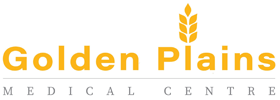Benefits of 3D Total Body Photography
The incidence rate of Melanoma continues to rise in many parts of the world, and major mortality from advanced diseases is observed. But patients possess a potential hopeful forecast when detected early. Early detection methods include several skin assessment tests by practitioners, and total body photography as a whole using 2D imaging. This screening method has lately seen a development from 2D imaging to 3D imaging.
What is 3D total body photography?
3D Total body photography is a very useful imaging tool for high-risk patients or patients with multiple dysplastic naevi, which can make assessments particularly difficult without technological assistance. In this context, we provide you with the advantage the new screening method has to offer us. The optimum melanoma screening system should be less time-consuming and cost-effective and available in all populations and social strata for patients. It has the ability to meet the above-mentioned criteria and is of great significance for early detection.
Benefits of 3D Total Body Photography:
Early Detection
In the last decade, the medical care of melanoma, a disease with limits of care options and a poor forecast, has been significantly advanced. However, metastatic melanoma treatments still possess varying response rates and toxicities, despite continuous major innovations.
In the early detection of melanoma, 3D total body photography and SDDI may play an important role. In addition to individual lesion dermoscopic images on the screen, the process of imaging also enables the patient to closely visualize his total skin surface. In addition to the early identification of melanoma and non-melanoma skin cancer, this technology may also play a role in increasing the importance of ongoing prevention behaviour and self-skin checks.
Reduces in Patient and Physician Anxiety
3D Total Body Photography is proven to lower the anxiety of both patients and therapists resulting in great support to the therapist's approach to management. After having done conventional 2D total body photography, it is been observed that patients with a personal history of melanoma reduced their concern at all levels. Physicians have been concerned that the photography of pigmented lesions could elevate medical liability due to accusations of missing melanoma diagnoses. But no report of medical abuse arising from the use of the old screening method was found in two studies carried out in the US.
Going forward
Total body photography is likely to integrate future technology to monitor the melanocytic naevi. The technology includes smartphone applications, computer-aided tests, and genetic risk profiling. Smartphone technology is a changing research field in melanoma detection. A survey of melanoma individuals found that more than half of all melanomas have been self-detected, so mobile telephone technology could allow communication among patient dermatologists.
If you have any doubts about Melanoma and would like to see an expert, Golden Plains is just a call away!

